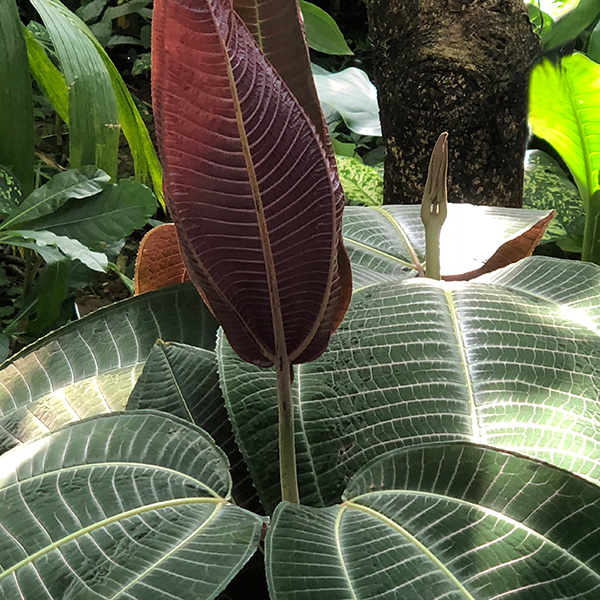Although Dieffenbachia seguine is one of the most popular species, lots of others such as D. Maculata are also worth a considering, so lets take a closer look at Dieffenbachia in general.

This very attractive indoor plant comes with a bit of a bad reputation, and this is because the plant contains microscopic needle-shaped calcium oxalate crystals. If eaten they cause swelling and pain, and even the inability to speak hence the common name ‘Dumb Cane’. The sap is also an irritant so avoid contact with that as well.
However it is a very attractive and easy care plant in the right position. It is also very easy care, easy to prune as it coms back quickly and lots of variety in foliage colours.
Different species have different growth habits and colours many widely available, it is Dieffenbachia seguine that is most commonly grown.
How to Grow Dieffenbachia
Direct sun must be avoided, however all species dole bright indirect light. Good light is important both for healthy growth and for good foliage colour.
- Watering
A good deep watering every 14 days should be adequate, this does depend on your growing medium and climate.
Indoors if you run heating frequently and in summer months it will need more water, in cooler times less water.
In general wait until the soil dries before watering and then deep water. - Soil/Growing Medium
To some extent the soil you use will also determine watering. Free draining soils are recommended.In heavier soils that retain water you will need to water less often. - Temperature
These are a tropical plant, they do not like the cold, so try to keep the temperature in the daytime at around 60f – 80f (15 – 25C)
Avoid placing the plant in cold drafts and all in fronton heating ducts as these dry the air, and Dumb Cane like humidity. - Potting and Repotting
Wear gloves and eye protection, and avoid coming in contact with the sap.
Use a free draining potting mix.
Don’t be fried to prune back hard to maintain a more compact growth habit.
Water in well after repotting. - Fertilizer
A low release 12 month fertilizer will be adequate. You can use a supplement liquid fertiliser in spring and summer if you feel that growths slow.
Summary Information
- Botanical Name Dieffenbachia seguine and Dieffenbachia ssp
- Common Names Dumb cane, Leopard Lily
- Family Araceae
- Origins ; South America, Brazil and other countries.
- Position : Good filtered Light to morning sun.
- Soil : Humus rich and well drained.
- USDA Zones : 10 – 12 outdoors
- Height : To 10 ft (3m)often smaller indoors
- Spread : To around 3ft (1m)
- Growth Rate : Fast at first, then slowing in containers and indoors.
- Frost tolerant : No

